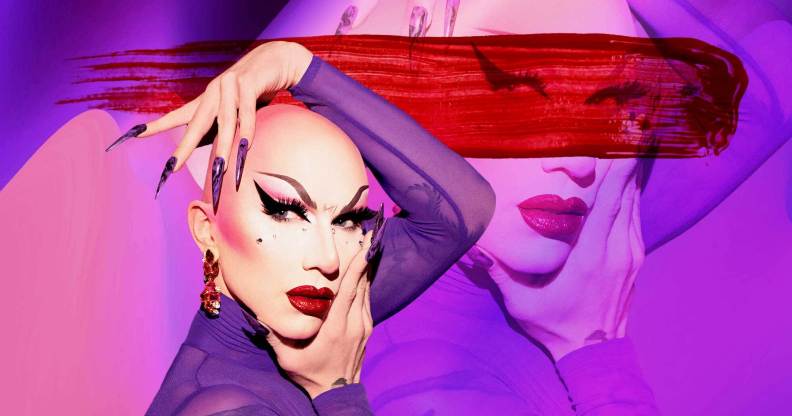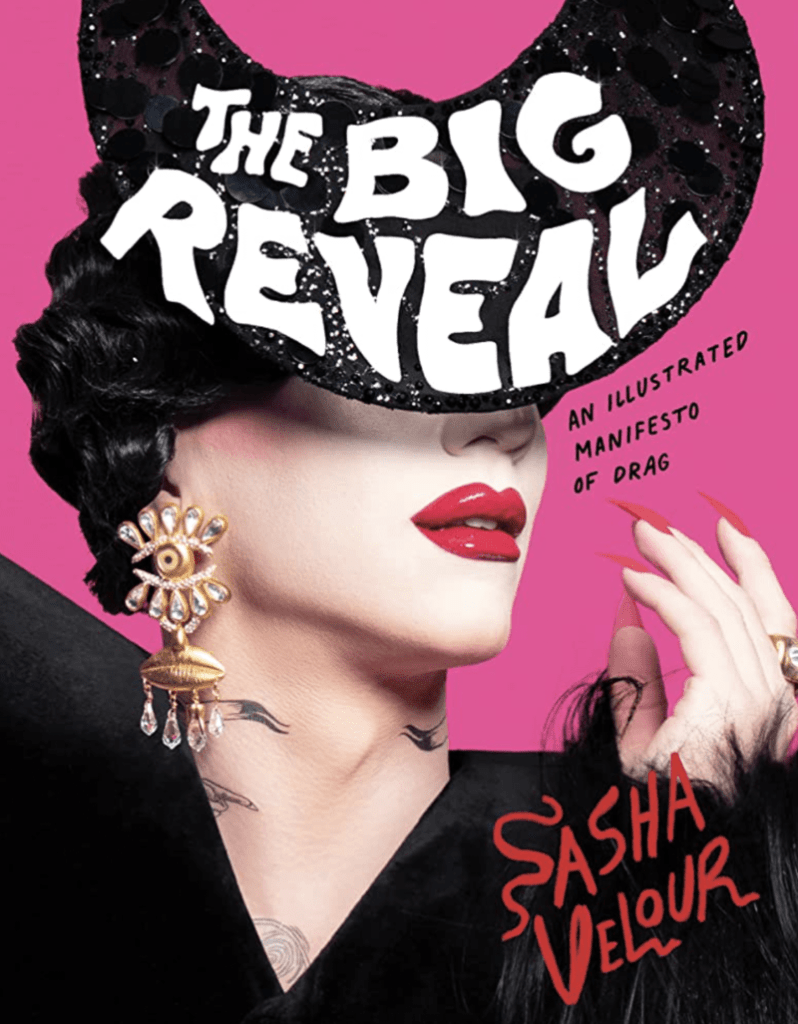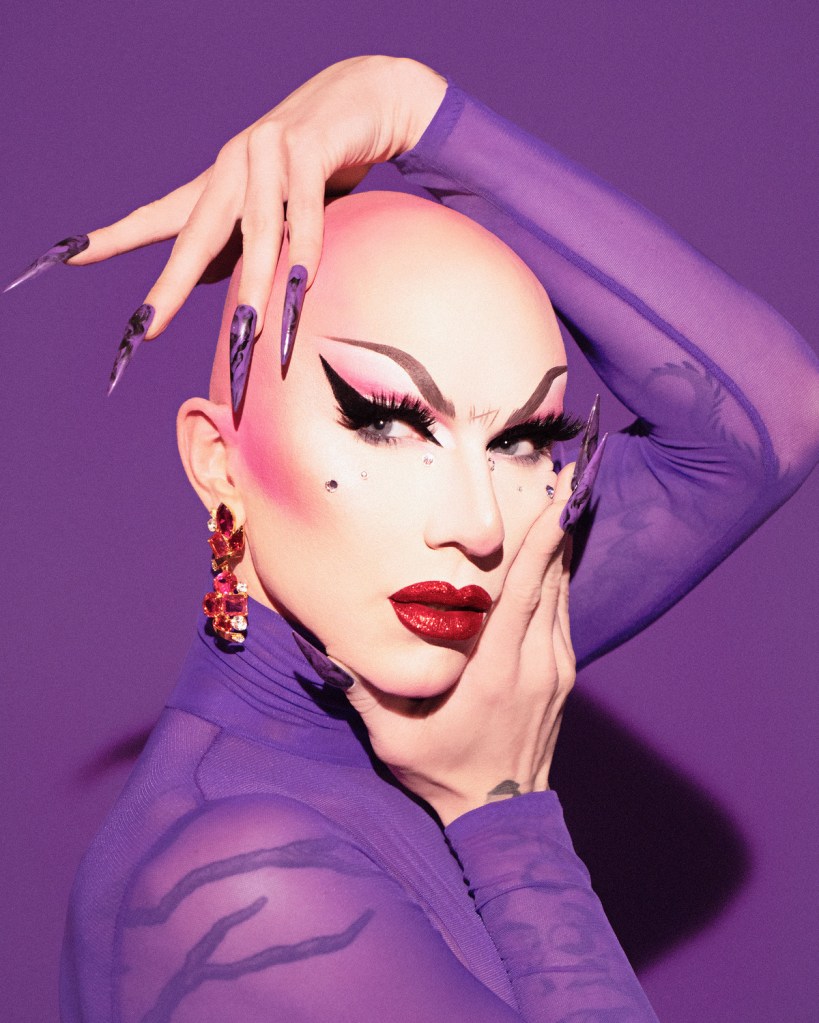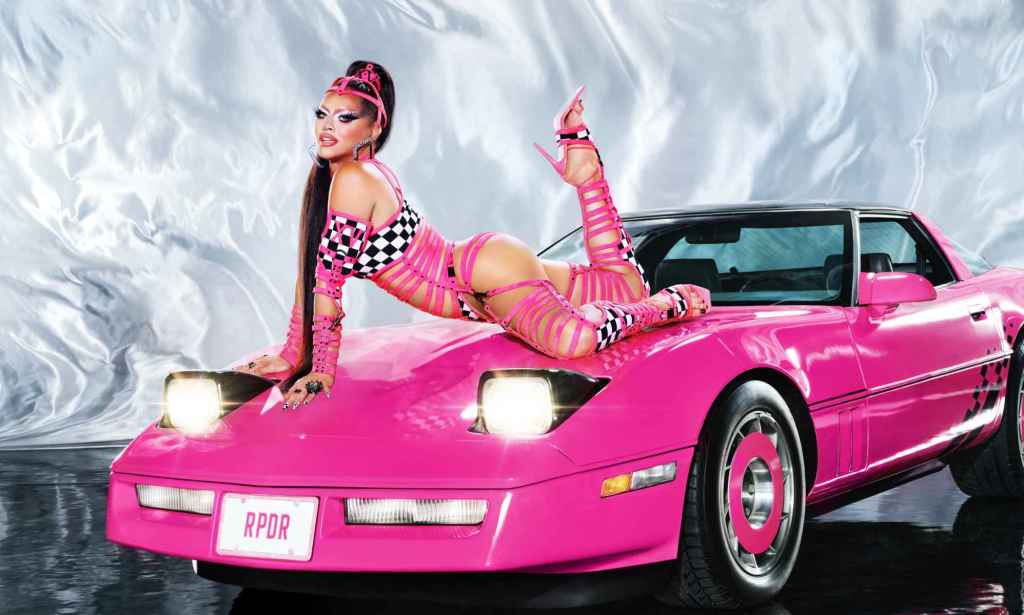Sasha Velour on her evolution since Drag Race and why anti-LGBTQ+ hate won’t win

Sasha Velour has opened up about what it was like to film season four of We’re Here. (Tanner Abels/Nicholas Needham/Getty)
“To say that drag is not dangerous is an understatement,” RuPaul’s Drag Race winner Sasha Velour says firmly.
“I tried to say that drag is healing, drag saves lives, drag brings people together, raises money and redistributes resources for the most underprivileged in our community.”
The 35-year-old, Brooklyn-based drag performer is talking about her new book The Big Reveal, a “manifesto” on the revolutionary history of drag as an art form.
Through five years of research and three years of writing, Sasha has traced how drag evolved across centuries, from the breeches roles of European theatre and Japanese Kabuki in the 1600s, through to the Drag Race chokehold of today.
Though Sasha says she’s not a natural writer despite having a literature degree, The Big Reveal is thorough, robust and most crucially, needed.
At a time where right-wing politicians and extremists are framing drag as something inherently inappropriate, banning it in states across the US and protesting it violently in the UK, Sasha Velour’s book is a timely reminder that it has existed long before any of us were born.

“We’re constantly coming up against these fears that drag and that queer and trans expression is this new thing,” Sasha says. “The history shows me that not only has it been part of art and theatre and spirituality from the earliest days of humanity, but it’s also been kind of political in a way.”
Sasha was someone who was interested in drag’s unfurling history before she ever got into drag herself. It’s why on her Drag Race season she was, in her own words, “annoying” about sharing her knowledge.
She’d learnt so much about how drag had always been more than just men in dresses – it’s drag kings and queer women in femme drag. She’s keen now for Drag Race fans to look beyond the drag we see in mainstream culture.
As for her own drag style, that’s largely inspired by the women in her family, namely her mother and grandmother, both of whom allowed her to dress up as a princess or witch when she was growing up – without making her feel “freakish”.
“Our drag is always a tribute to people,” she says. She’s a bald queen, for example, due to her mother having to shave her head while undergoing treatment for cancer. Though both her mother and grandmother have since passed, she sees her drag as a “place of remembering that early encouragement” she received from her family.
“I think a lot of people have dealt with loss,” she says. “Telling that story as part of my drag has been an access point for other people going through that. We can connect and form a new alliance dealing with this hard thing.”
Beyond being a bald queen, Sasha Velour is known for her high-concept, theatrical performances, with avant-garde looks to boot. Her 2019 to 2022 tour Smoke & Mirrors was lauded by critics as an “expressionist performance-art illustration”, while PinkNews dubbed it an “important piece of queer history” in itself.

Sasha has helped to pull mainstream drag out of its box, but her style wasn’t always well received.
“There was still a lot of gatekeeping from prior generations when I was trying to come up in the scene … Before I won Drag Race, people were so resistant to the types of songs and the types of performances I wanted to do,” she reveals.
“I remember repeatedly being told ‘You won’t work if you want to keep doing these storytelling numbers with your projections, it’s so high maintenance’. Now that’s kind of what everyone’s doing in drag – high production numbers.“
One such number that changed the game, at least for Drag Race queens, was her “So Emotional” rose petal reveal during the season nine finale lip sync battle, which ultimately clinched her the crown.
It altered the fabric of the show by raising the lip sync bar. Ever since, fans have demanded she make a return to the competition during an ‘all winners’ season.
It’s something she’s up for, particularly as she feels somewhat like a different drag queen since she filmed the show seven years ago.
“I feel like I’m more feminine and more masculine and more non-binary than ever before in my drag. I’ve been joking that this year, I really was trying to explore a sexy side of Sasha Velour,” she explains, adding that she knows her persona has long been focussed on the “intellectual” side of drag. “I think she deserves to be sexy and desirable as well.”
In recent months, she’s started padding out her curves more, baring her skin and improving her dancing skills.

It’s something she learnt from the show’s most recent victor and drag luminary, Sasha Colby, who Sasha Velour has worked with “for many years”.
“She’s one of the reasons I’m inspired to be sexier in my drag,” the season nine winner says. “Because she really shows what an art it is to have your power and to also be alluring and know you’re alluring on stage. It’s really It’s intoxicating to watch.”
In turn, Sasha Colby told Velour that she “channelled a little of my style of drag too”.
While Sasha Velour’s lip-sync victory felt historic in Drag Race terms, Sasha Colby’s felt significant on a wider social scale. Against a backdrop of anti-trans, anti-drag laws in the US, she triumphed and told lawmakers that trans and queer people can’t be erased.

With the US 2024 presidential election creeping closer, and seemingly fought with LGBTQ+ people used as bait, out and proud visibility will be evermore important.
“It’s just my job to keep going and to keep having a visible show, a visible presence so that people can come together and still enjoy drag,” Sasha Velour says. “I just try to be an example of drag doing good things in the world and hold myself to that impossible standard.”
Through her monthly drag show NightGowns, she raises money to support queer people in accessing legal support, housing and medical care. Using her platform to support queer people who are without the privileges of global fame has become her new goal.
“I’ve gotten to a place in my career where I’m going to be able to survive any backlash,” she says of the right-wing attacks on drag performers. “But these other imbalances in society will, I think, become more visible as these laws [progress].”
It’s Pride Month, yet the community mood is rather more solemn than celebratory. Right now feels like one of the most dangerous times for queer folk in recent history. For some young LGBTQ+ people, who may just be coming into their identities, the future seems bleak.
Sasha’s advice? “I found in my many years of being a drag queen, nothing lasts – for good and for bad.”
She says that for conservatives, too. Change comes, whether you want it to or not.
“It’s the only universal, and it’s it saved my life, the fact that things can always change. I think we can we can combat misinformation with the truth. I believe the pendulum will swing back.”
The Big Reveal: An Illustrated Manifesto of Drag is out now.
How did this story make you feel?

